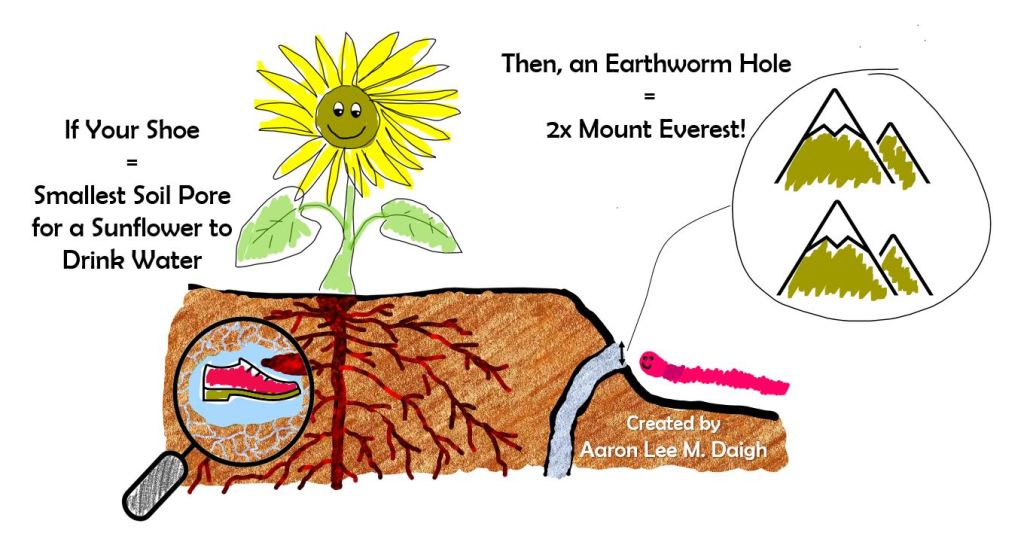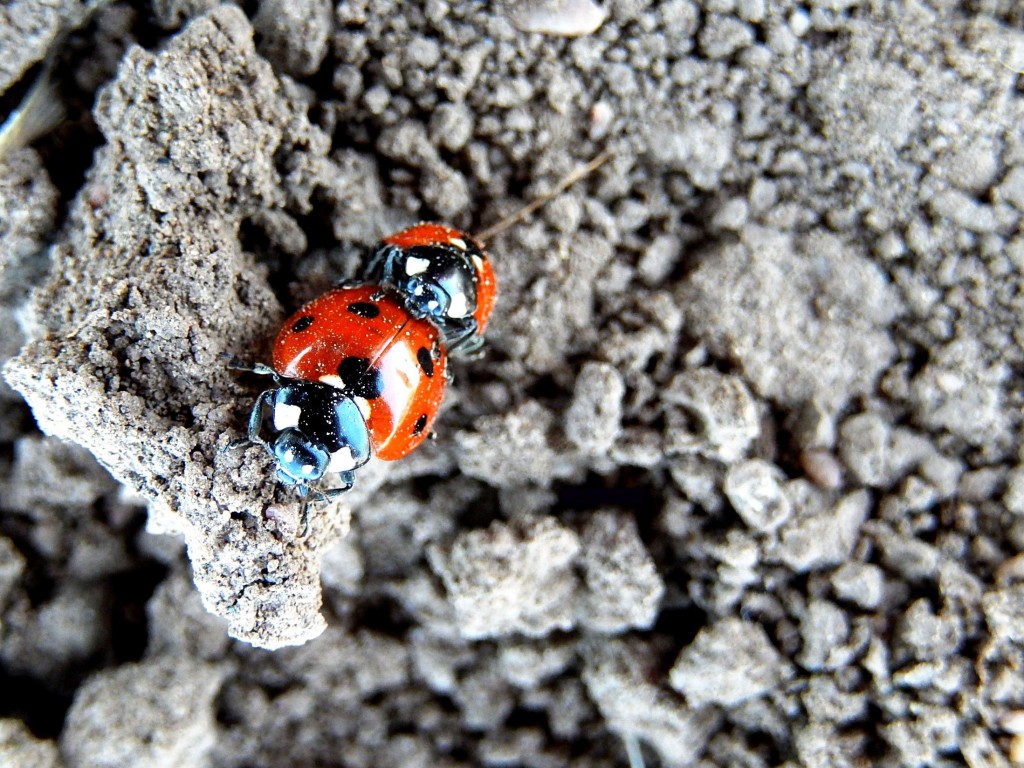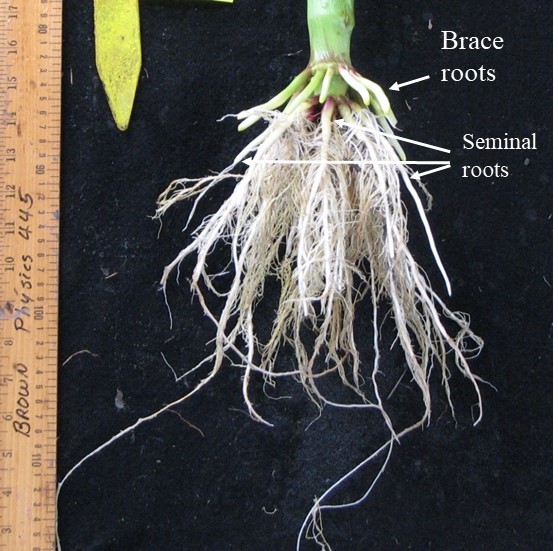Pores are in almost everything. Look closely enough and you will find them in the wood and bricks of buildings, your skin, and the ground beneath. Soil pores are the spaces between Earth’s solid pieces (rocks, sands, silts, clays, and organic matter).

Credit: Aaron Lee M. Daigh
Some pores are isolated and surrounded by solids on all sides, like a trapped bubble. Most pores are connected to each other and form pathways reaching far into the Earth. These pores are like the shops, social hangouts, roadways, and commercial flyways of the world below our feet. They are where the action happens.
Soils have pores, too. Soil is made of solid material – particles of sand, silt, clay, and organic matter. Some of the soil pores are large enough for us to see, such as earthworm holes and cracks that occur in soil during droughts. However, you cannot see most pores because they are so small, even for standard microscopes.
Soil pores have a huge variety of shapes and sizes. Imagine your shoe was equal to the smallest pore from which a sunflower can take up water. Compared to that, an earthworm hole’s entrance would be twice as tall as Mount Everest! The variety of sizes and how they connect to each other lets water and air flow through them, but also holds and stores some of the water just like pores in a kitchen sponge.

The different sizes and shapes of pores support many services in soils that ultimately benefit nature and humans. This may not be obvious at first, but it is like how we use different spaces in our everyday lives. For instance, hallways, stairways, and elevators allow people to move through buildings. The pipes in the walls move water to sinks and fountains, while other pipes remove waste from bathrooms, dishwashers, and laundry rooms. Rooms within buildings give us spaces to rest, eat, work, play, and socialize. Notice how all these different types of spaces have their own size and shapes to work the way we intend them to.
In the same way, some soil pores are great for holding water, while others are excellent for moving water and air in and out of the soil. Networks of differing pores support the large diversity of organisms living under ground to meet their own needs for water, air, food, and shelter.
The surfaces of pores are particularly active, with some more active than others. Pore walls built from or lined with clays and organic matter provide a fertile area for the trading, transforming, and storing of desirable chemical compounds such as plant nutrients and food for microorganisms.
All this activity with chemical compounds is due to the surfaces having electrical charges. Chemical compounds with an opposite charge to the pore walls will tend to stick to the wall, similar to how magnets work, as long as another compound is not already taken the space. Compounds with a similar charge as the pore wall will be pushed away and suspended out in the pore’s water. When water moves through the pores, these compounds will flow with the water to wherever the neighboring pores connect to, such as water tables and aquifers.

Lastly, these pores give the space for plant roots and microorganisms to be born, grow, and recycled back into the earth. Tubers such as potatoes and carrots are produced in pores. Other plants that provide food aboveground, such as beans and lettuce, anchor themselves into pores by their roots which also let them drink water and get nutrients stored in the soil’s pores. And, roots themselves create more soil pores.
Since soils are generally soft, at least when compared to rocks, we can change the sizes and shapes of pores to a certain extent. Much like how architects, craftspersons, and engineers design the layout of homes, botanical gardens, closets, and tractors, we can partially design and manage pore spaces in the upper parts of the soil. So, the next time you drive across a field, till the garden, or choose which vegetables, flowers, or trees to plant in the yard (and yes, plant roots design and manage their own spaces below ground!), think of yourself as a designer and ask yourself what you want the pores below your feet to achieve. To learn more about pores and soil health in your area, contact your local extension educator or specialist.
Answered by Aaron Lee M. Daigh, University of Nebraska – Lincoln
To receive notices about future blogs, be sure to subscribe to Soils Matter by clicking on the Follow button on the upper right! Explore more on our webpage About Soils. There you will find more information about Soil Basics, Community Gardens, Green Infrastructure, Green Roofs, Soil Contaminants, materials for Teachers and more.

26 thoughts on “What are soil pores?”